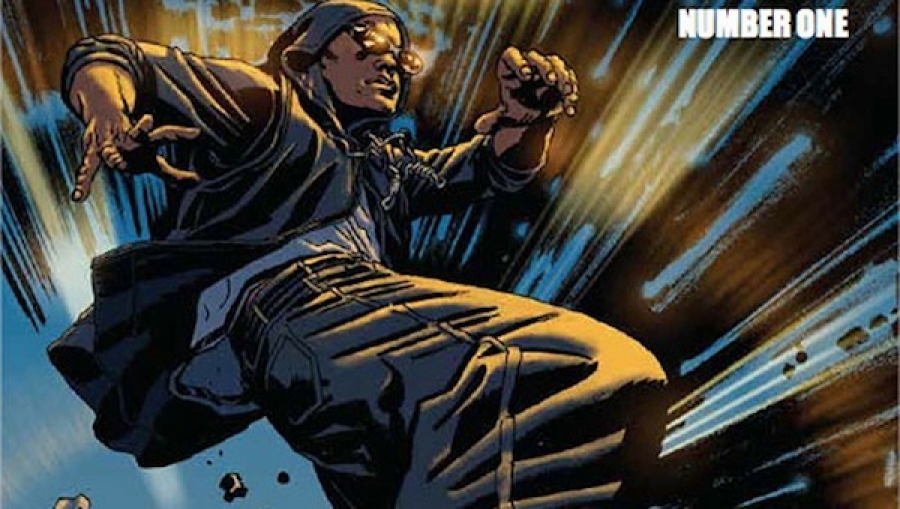MPH #1 from Mark Millar and Duncan Fegredo starts off in 1986 in a small town in Missouri. Our narrator describes the story of Mr Springfield, “the world’s first and only super human,” who is, at the moment, careening through buildings and tearing up landscapes in an out-of-control, drug-induced, multi-state, super-speed sprint. Why? How? We know not. Our only clue comes when this shadowy figure finally collapses and the police descend on him, as they would some sort of catastrophic UFO crash. After chaining him up and placing a burlap sack over his head, they remove from his person a small pill bottle labeled with the letters MPH. Cut to Detroit 2014, and we learn that our narrator is 19-year-old Roscoe, a relentlessly positive and ambitious drug runner who is just trying to pull himself and his girlfriend Rosa out from under the oppression of poverty. Things do not go as planned, and our hero ends up imprisoned, betrayed, and hopelessly depressed. And, right when he’s doing a swan dive towards rock bottom, he stumbles on these same MPH pills from earlier, takes one, and the rest, they say, is history.
What would you do if you were suddenly gifted with super speed? What would the rest of the world look like from your perspective? The fun thing about this book is now we are seeing super speed from inside the experience, so the outside world appears slow, almost frozen in time. And, the way Millar and Fegredo tell this story, having first shown us from the outside perspective and now bringing us inside of the super speed experience, where the last fourth of the book occurs between the tick and tock of a clock, it’s unbelievably exhilarating. The art is great, and for some reason it reminds me of Charlie Adlard’s work on The Walking Dead, except without the zombies. And, the hardest thing I think about doing art for this book would be conveying the frozen (or near enough) scenarios, because, if you think about it, sequential art is just a series of still images. There’s change between panels, but within panels, obviously not. So, how do you convey the movement of one character AND the frozen postures (often in mid-action) of all the others around him? The answer is in the script. Through long bits of monologue, as the character moves through the scene and reacts verbally to his unusual circumstances.
The issue itself is fantastic, full of the typical whimsy and intrigue we’ve come to expect from Millar. Described by the man as “kind of The Fast and Furious without cars,” MPH #1 handles the medium with a playfulness and skill that is inspiring and may, in fact, be the beginning of a new era in comics. Millar has stated that this series will lay the groundwork for an entire interconnected Millarworld Universe, encompassing many series over the next five years and all set in our modern world. It sounds great to me, and, from what I’ve seen so far, I’m thrilled to be along for the ride!

